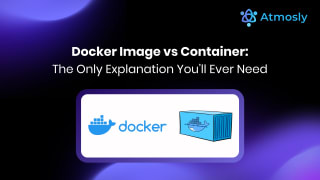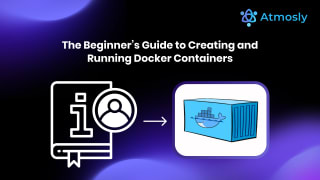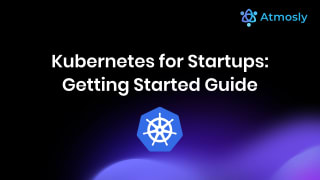Introduction
In 2025, every successful Python team relies on one thing a fast, reliable, and automated CI/CD pipeline.
Manual builds and deployments no longer cut it when customers expect faster updates, stronger security, and zero downtime.
A well-designed Python CI/CD pipeline automates everything from testing and dependency management to deployment and security scanning. It ensures your code runs consistently across environments saving time, reducing errors, and accelerating delivery.
In this complete guide, you’ll learn how to:
Build a robust CI/CD pipeline tailored for Python projects.
Integrate automated testing, linting, and vulnerability scanning.
Deploy seamlessly using GitHub Actions, Docker, or Atmosly’s visual, drag-and-drop builder.
Whether you’re running a Django app, Flask API, or enterprise Python service, this guide will help you master CI/CD automation and ship confidently in 2025.
Understanding Python CI/CD Fundamentals
Python-Specific Considerations
- Virtual environment management : Use tools like
venvorvirtualenvto isolate dependencies per project, ensuring your pipeline replicates local dev environments reliably. - Package dependency handling : CI workflows should automate dependency installation using
requirements.txtorpip-toolsto avoid manual errors and ensure consistent builds. - Version compatibility : Run tests across multiple Python versions (e.g., 3.8, 3.10) to catch incompatibilities early using tools like
toxor matrix builds in GitHub Actions. - Testing framework integration : Integrate testing frameworks like
pytestorunittestinto your pipeline for automated unit, integration, and regression testing. - Code quality tools :Use linters (
flake8,pylint) and formatters (black,isort) to enforce consistent coding standards automatically in every commit.
Key Benefits
- Consistent testing environments: Virtual environments and containerization ensure code behaves the same across local, staging, and production environments.
- Automated dependency management: CI/CD automates installing and updating dependencies, reducing human error and improving traceability.
- Standardized code quality: Enforcing style and linting checks in the pipeline ensures codebase health and maintainability across teams.
- Reproducible builds: Using pinned dependencies and environment snapshots guarantees that builds are identical every time.
- Faster deployment cycles: Automation shortens feedback loops, enabling quicker releases with confidence through continuous integration and delivery.
Essential Components for Python CI/CD Pipeline
A robust Python CI/CD pipeline is made up of several key building blocks. Each component plays a crucial role in ensuring your code is tested, secure, and ready for deployment. Below are the essential elements you should include in any Python pipeline:
1. Environment Setup
Set up a clean, isolated environment for each pipeline run. This ensures consistency and prevents dependency conflicts. Most CI/CD platforms provide ways to specify Python versions and install dependencies.
# Example environment setup in GitHub Actions
name: Python CI/CD
on: [push, pull_request]
jobs:
build:
runs-on: ubuntu-latest
strategy:
matrix:
python-version: [3.8, 3.9, 3.10, 3.11]
steps:
- uses: actions/checkout@v2
- name: Set up Python
uses: actions/setup-python@v2
with:
python-version: ${{ matrix.python-version }}
- name: Install dependencies
run: |
python -m pip install --upgrade pip
pip install -r requirements.txt
2. Code Quality Checks
Automate code style and static analysis checks to catch issues early and enforce standards across your team.
- name: Lint with flake8
run: |
pip install flake8
flake8 . --count --select=E9,F63,F7,F82 --show-source --statistics
flake8 . --count --max-complexity=10 --max-line-length=127 --statistics3. Testing
Run automated tests to validate your code's functionality and catch bugs before deployment. Use frameworks like pytest for comprehensive test coverage.
- name: Test with pytest
run: |
pip install pytest pytest-cov
pytest tests/ --cov=src/ --cov-report=xml4. Security Scanning
Scan your codebase for security vulnerabilities as part of your pipeline to ensure safe deployments.
- name: Security scan
run: |
pip install bandit
bandit -r src/ -f json -o security-report.jsonBuilding Your First Pipeline
Now that you understand the essential components, let's walk through setting up your first Python CI/CD pipeline. We'll use GitHub Actions for this example, but the concepts apply to other platforms as well.
Need a faster way to deploy Python apps? Sign up for Atmosly and build your first CI/CD pipeline in minutes →
Understanding the Components
Each part of the pipeline serves a specific purpose, from version control integration to deployment strategy. Here's a breakdown of what each stage does and why it matters:
- Version Control Integration: Automatically triggers on code changes, maintains build history, and enables collaboration through pull requests.
- Environment Consistency: Uses virtual environments for isolation, ensures reproducible builds, and manages Python versions effectively.
- Quality Assurance: Runs automated tests, enforces code style, and checks for security vulnerabilities.
- Deployment Strategy: Promotes code through environments, implements safety checks, and enables rollback capabilities.
Project Structure
Organizing your project files is key to a maintainable and scalable pipeline. Here's a typical Python project structure:
my-python-app/
├── src/
│ ├── app.py # Main application code
│ └── utils/ # Utility functions and helpers
├── tests/
│ └── test_app.py # Test cases for the application
├── requirements.txt # Project dependencies
└── .github/
└── workflows/ # CI/CD pipeline configurations
└── ci.ymlsrc/: Contains the main application code, separated for clear organizationtests/: Houses all test files, following Python testing best practicesrequirements.txt: Lists all project dependencies with versions.github/workflows/: Contains GitHub Actions workflow definitions
Visual CI/CD for Python Apps with Atmosly
Atmosly redefines how Python developers build, test, and ship code by offering a visual, drag-and-drop CI/CD pipeline builder—eliminating the need to write complex YAML configurations. Whether you're working with Django, Flask, or FastAPI, Atmosly enables you to build a complete CI/CD workflow that’s fast, secure, and production-ready from day one.
With built-in support for DevSecOps best practices, Atmosly allows teams to embed security, quality checks, and deployment automation into their pipelines without requiring deep DevOps expertise. The platform helps you shift left without context switching, making security an effortless part of your delivery process.

What Makes Atmosly’s Visual CI/CD Stand Out?
1. Easy Source Integration
You can connect repositories from GitHub, GitLab, or Bitbucket in seconds. Atmosly automatically detects branches and allows pipelines to trigger on code pushes, pull requests, or manual actions.
2. Visual Docker Build Configuration
Atmosly eliminates the need to write Docker build scripts. Developers simply fill out a form to define:
- Dockerfile location (e.g.,
./vote/Dockerfile) - Build context directory
- Target platform (e.g.,
amd,arm) - CPU and memory limits (e.g.,
250m,1000Mi) - Optional spot instance usage for cost savings
- Build caching for faster rebuilds
This approach dramatically reduces onboarding time and removes configuration errors.
3. Built-in DevSecOps Tools
Security checks are integrated directly into the workflow editor.
- Secret Detection scans your source code for hardcoded credentials, tokens, and other sensitive information.
- Trivy Integration runs automated vulnerability and misconfiguration scans on your container images.
- Custom Scripting allows you to add custom security checks, validation logic, or any required shell scripts during the pipeline.
4. Pre- and Post-Build Logic
Atmosly supports drag-and-drop scripting steps at any stage of the workflow. This is useful for adding database migration steps, artifact versioning, or test report uploads. It gives teams the flexibility to define workflows without sacrificing control.
5. One-Click Deployments
Atmosly enables seamless deployments to Kubernetes, cloud environments, or custom servers. You can define deployment targets and credentials visually, reducing the likelihood of misconfiguration. Once builds and checks are successful, deployment happens automatically.
6. Workflow Reports and History
Every pipeline execution is logged with complete visibility into build results, vulnerabilities detected, deployment success, and test outputs. This audit trail supports better debugging, compliance readiness, and incident reviews.
Step-by-Step: Building a Python CI/CD Pipeline in Atmosly
Atmosly automates the entire CI/CD workflow creation process. Once you connect your Git repository and define basic deployment details, Atmosly automatically generates a complete pipeline including Source, Build, Security Scanning, and Deployment stages — all visible inside the visual workflow editor.
1. Connect your Git repository
Start by linking your application’s GitHub, GitLab, or Bitbucket repository.
Atmosly automatically detects the structure of your application and asks for:
• The branch you want to build from
• The Dockerfile path
• The build context directory
• The container registry where the image should be pushed
Once these values are added, Atmosly has everything required to create your pipeline.
2. Atmosly auto-creates your CI/CD pipeline
Right after the Git connection and build details are saved, Atmosly auto-generates a ready-to-run pipeline.
This includes:
• Source checkout
• Automated Docker image build
• Image push to your registry
• Optional security steps such as Secret Detection and Trivy
• A Deploy stage with optional approvers
This pipeline instantly appears inside the Workflow Details screen, exactly as shown in your visual editor.
3. Review or customize the generated pipeline
You can now open the pipeline in the visual workflow editor to:
• Add unit testing steps (pytest, unittest)
• Add linting steps (flake8, pylint, black)
• Adjust build parameters
• Add approval gates
• Insert conditional logic or environment-specific behavior
Atmosly reflects every change visually, and no YAML is required.
4. Add DevSecOps steps
Atmosly supports integrated security checks that you can enable in one click:
• Secret Detection – scans your repository for hardcoded secrets (visible in the pipeline as “Secret Detection”)
• Trivy Vulnerability Scan – scans your container image for vulnerabilities (visible as “Trivy” in your pipeline)
• Custom Shell Scripts – for policy enforcement, SBOM generation, or compliance checks
These steps can be inserted at any stage of the workflow.
5. Configure deployment and optional approval workflow
The auto-generated Deploy step allows you to:
• Select the Kubernetes cluster (EKS, GKE, AKS, etc.)
• Choose namespace, workload, and configuration overrides
• Set rollout strategy
• Decide whether deployments run automatically or manually (as shown in your UI)
Atmosly also provides a built-in approval mechanism:
• Add approvers such as engineering managers, technical leads, or DevOps leads
• Pipeline execution pauses at the Deploy step
• Deployment continues only after approval is granted
This helps maintain production controls, compliance, and release governance.
6. Deploy automatically or manually
Based on your configuration:
• Pipelines can run automatically on each push
• Or require a manual trigger for specific stages such as production deployments
• You can trigger builds manually using “Save & Execute Now” in the Workflow screen
This gives you full control over how releases flow across environments.
7. One-click rollback with ArgoCD sync
If a deployment introduces issues, Atmosly offers an instant rollback feature:
• Select the previous stable build
• Click “Rollback”
• Atmosly automatically redeploys the earlier version
• ArgoCD synchronizes the cluster state to ensure GitOps alignment after rollback
This provides fast, safe recovery during incidents or failed releases.
8. Monitor builds, deploys, and execution history
Atmosly tracks every run and provides complete visibility:
• Pipeline execution logs
• Test results and security scan outcomes
• Approval status and audit trail
• Deployment success or failure
• Complete execution timeline (as shown in the Execution History screen)
You can access Workflow Details, Variables, Configuration, Reports, and Execution History directly from the left panel, making Atmosly a single source of truth for all CI/CD activity.
Why It Matters
In traditional CI/CD setups, building secure and reliable pipelines often requires:
- Writing and maintaining YAML configuration files
- Integrating multiple third-party scanners and linters
- Managing secrets and access control manually
- Setting up custom scripts for deployment and validation
With Atmosly, all of this is embedded into a single visual interface, reducing setup time, avoiding errors, and enabling any developer to take control of DevSecOps workflows.
Best Practices and Optimization for Python CI/CD Pipelines
Creating a functional CI/CD pipeline is only the beginning. To ensure long-term reliability, speed, and maintainability, it's crucial to follow a set of best practices that cover dependency management, testing strategy, and performance optimization.
1. Dependency Management
Effective dependency management is essential to avoid version conflicts and ensure reproducible builds.
- Use
pip-toolsorpoetryto generate lock files for deterministic builds. This helps freeze exact package versions across environments. - Update dependencies regularly to patch known vulnerabilities and take advantage of performance improvements.
- Integrate dependency scanning tools like
pip-auditorsafetyto detect insecure or outdated packages in your workflow.
2. Testing Strategy
A strong testing foundation ensures that changes don’t introduce regressions or unintended side effects.
- Adopt a testing pyramid approach prioritize unit tests, followed by integration and a minimal set of end-to-end tests.
- Leverage
pytestfixtures to simplify setup and teardown logic while maintaining readable test code. - Maintain high test coverage, but focus on meaningful coverage that validates business logic rather than superficial lines of code.
3. Performance Optimization
Optimizing pipeline performance reduces feedback time for developers and accelerates the release cycle.
- Optimize build times by reducing unnecessary steps and keeping Docker images lightweight.
- Implement caching for dependencies, Docker layers, and test artifacts to avoid redundant work across builds.
- Use parallel test execution to reduce time spent running suites, especially as the codebase grows.
Troubleshooting Common CI/CD Issues
Even with best practices in place, teams often face recurring challenges. Here’s how to handle some of the most common CI/CD issues effectively.
1. Dependency Conflicts
Conflicting versions across environments can lead to unpredictable behavior and broken builds.
Solution:
- Always use isolated virtual environments (
venv,virtualenv, orpipenv) for each project. - Lock dependencies with a tool like
pip-toolsorpoetryto ensure reproducibility. - Review and update your dependencies periodically, especially after resolving conflicts.
2. Test Failures
Unreliable or failing tests can erode trust in the pipeline and slow down delivery.
Solution:
- Add detailed logging and failure traces to speed up debugging.
- Categorize tests (unit, integration, e2e) and run them in separate stages for better observability.
- Maintain test isolation to avoid flaky behavior due to shared state or side effects.
3. Deployment Issues
Broken deployments can lead to downtime and poor user experience if not managed properly.
Solution:
- Implement robust rollback strategies, such as blue-green or canary deployments.
- Use environment-specific configurations to prevent misconfigurations between dev, staging, and production.
- Monitor deployments with real-time metrics and set alerts for failures or performance regressions.
By integrating these best practices into your CI/CD pipelines, you not only reduce the risk of failure but also create a more stable, secure, and scalable delivery process for your Python applications.
Conclusion
In 2025, building and maintaining a CI/CD pipeline for Python is no longer optional—it’s mission-critical. From automating tests and security scans to deploying with confidence, a strong CI/CD workflow ensures your app is always production-ready.
Atmosly makes this easier than ever with a visual, YAML-free pipeline builder that integrates DevSecOps, testing, and cloud deployments in one place. Whether you’re scaling a Flask app or managing enterprise-grade Python microservices, Atmosly helps your team deliver faster, safer, and smarter.
Start building your first Python CI/CD pipeline with Atmosly today.






